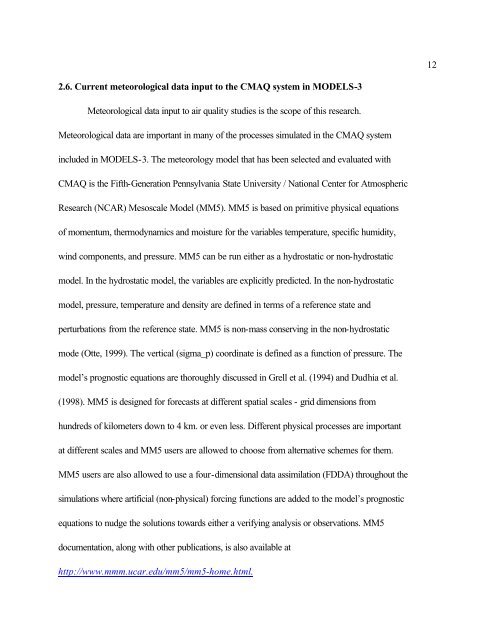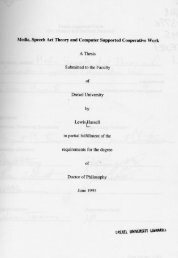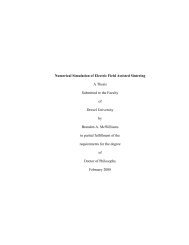Alternative small scale meteorology input to a chemical transport ...
Alternative small scale meteorology input to a chemical transport ...
Alternative small scale meteorology input to a chemical transport ...
Create successful ePaper yourself
Turn your PDF publications into a flip-book with our unique Google optimized e-Paper software.
2.6. Current meteorological data <strong>input</strong> <strong>to</strong> the CMAQ system in MODELS-3<br />
Meteorological data <strong>input</strong> <strong>to</strong> air quality studies is the scope of this research.<br />
Meteorological data are important in many of the processes simulated in the CMAQ system<br />
included in MODELS-3. The <strong>meteorology</strong> model that has been selected and evaluated with<br />
CMAQ is the Fifth-Generation Pennsylvania State University / National Center for Atmospheric<br />
Research (NCAR) Meso<strong>scale</strong> Model (MM5). MM5 is based on primitive physical equations<br />
of momentum, thermodynamics and moisture for the variables temperature, specific humidity,<br />
wind components, and pressure. MM5 can be run either as a hydrostatic or non-hydrostatic<br />
model. In the hydrostatic model, the variables are explicitly predicted. In the non-hydrostatic<br />
model, pressure, temperature and density are defined in terms of a reference state and<br />
perturbations from the reference state. MM5 is non-mass conserving in the non-hydrostatic<br />
mode (Otte, 1999). The vertical (sigma_p) coordinate is defined as a function of pressure. The<br />
model’s prognostic equations are thoroughly discussed in Grell et al. (1994) and Dudhia et al.<br />
(1998). MM5 is designed for forecasts at different spatial <strong>scale</strong>s - grid dimensions from<br />
hundreds of kilometers down <strong>to</strong> 4 km. or even less. Different physical processes are important<br />
at different <strong>scale</strong>s and MM5 users are allowed <strong>to</strong> choose from alternative schemes for them.<br />
MM5 users are also allowed <strong>to</strong> use a four-dimensional data assimilation (FDDA) throughout the<br />
simulations where artificial (non-physical) forcing functions are added <strong>to</strong> the model’s prognostic<br />
equations <strong>to</strong> nudge the solutions <strong>to</strong>wards either a verifying analysis or observations. MM5<br />
documentation, along with other publications, is also available at<br />
http://www.mmm.ucar.edu/mm5/mm5-home.html.<br />
12






